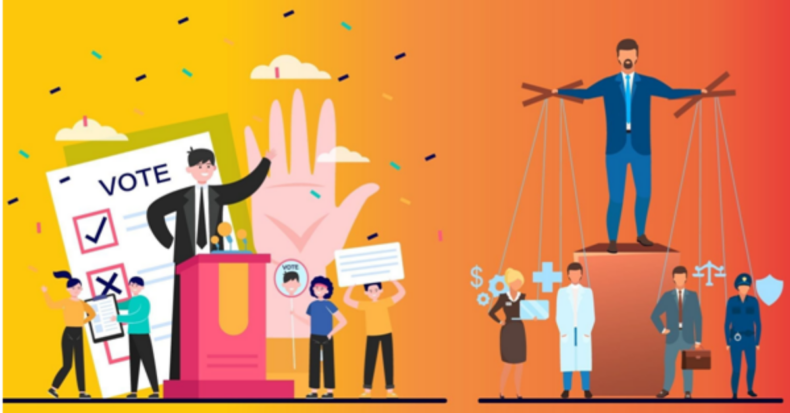Democracy is a system in which the people of the Country elect the government of the Country. But what brings a group in the eye of people to choose as a government?
Democracy is a term everyone knows, and it is a system in which the people (citizens) of the Country elect the government of the Country. Democracy is often said to be a slow but better system than any other one to make a government.
How does a democracy work?
The process and working of Democracy are not as simple as their definition is. In a democratic country, many political parties participate in the elections and win over the people’s hearts whose votes are the ultimate decision of the Competition cum Election.
People vote for a political party based on its work and promises. But nowadays, this process of convincing people to vote for any political party has somehow become a game,
A game just to win and not to profit the people, not to fulfil the promises political parties made to the people to make the government.
What is Populism?
The Term Populism came into existence when in the 19th century; it was used alongside the promotion of Democracy.
Populism, in simple terms, means a political program in which “few people” are people’s favourite and work just for the people of the Country.
Populism has several meanings according to the era from time to time. Hence it has not a single definition.
In its contemporary understanding, Populism is often associated with an authoritarian form of politics.
How does Populism affect Democracy?
There are several Debates in which scholars often have debated whether Populism has a good impact on Democracy or not?
Democracy is a system of people choosing the people to make the government and process it, so at first sight, Populism has a significant impact on Indian Democracy slightly too.
Populism in Indian Democracy
Since 1971, India has witnessed three grand level populist national elections, in 1977, 1989 and 2014, when a party is treated as a saviour, not a leader.
If 1971 was about Indira Gandhi, then 1977 was about Jayprakash Narayan, 1989 was about Feudal leader V.P. Singh, and in 2014 was entirely about Narendra Modi, who promised an epochal change.
After 2014, Modi was widely recognized as a leader to save Hindutva and a “developmentalist” for the middle class and corporate section of India.
Populism in India can be easily understood by a term that, “if not this, then who?” Because parties often lack firm faces and lose.
But it also needs to be understood that Populism in Indian Democracy will not work the same the second time as it worked the first time.
Therefore, it is crucial to understand that Work and fulfilling promises are essential factors of being in people’s eyes.
Is Democracy of India in Danger?
In March 2021, the Freedom House organization declared that India is no longer a free country.
It falls under the score of Partly Free countries, which does mean the Freedom of people and institutions in India have undoubtedly been affected,
Which might also be a sign of less Freedom of expression or doing something now you were utterly free to do before 2021.
But also, V-Dem has shown that the Democracy graph of India has too many variations that it is sometimes hard to understand whether the Democracy of India is depleting for always for its just a phase.
However, V-Dem in 2019 showed that the Democracy of India has been weakening since 2010, and it’s important to recognize this and work on it rather than criticizing the fact.












